Runner’s knee affects up to 40% of runners at some point. The good news is that you don’t need expensive treatments or months of physical therapy to fix it.
Sports physiotherapists have identified 15 specific exercises that target the root causes of runner’s knee. These exercises work by strengthening weak muscles, improving flexibility, and correcting the movement patterns that led to your pain in the first place.
Understanding runner’s knee: more than just a “runner’s” problem
What is runner’s knee (patellofemoral pain syndrome)?
Runner’s knee isn’t just one condition – it’s an umbrella term for pain around or behind your kneecap. The medical name is patellofemoral pain syndrome, which sounds scary but simply means your kneecap isn’t tracking properly as it moves up and down in its groove.
Think of your kneecap like a train on tracks. When the muscles around your hip and thigh are balanced and strong, the “train” stays on course. But when certain muscles are weak or tight, it derails slightly, causing friction and pain.
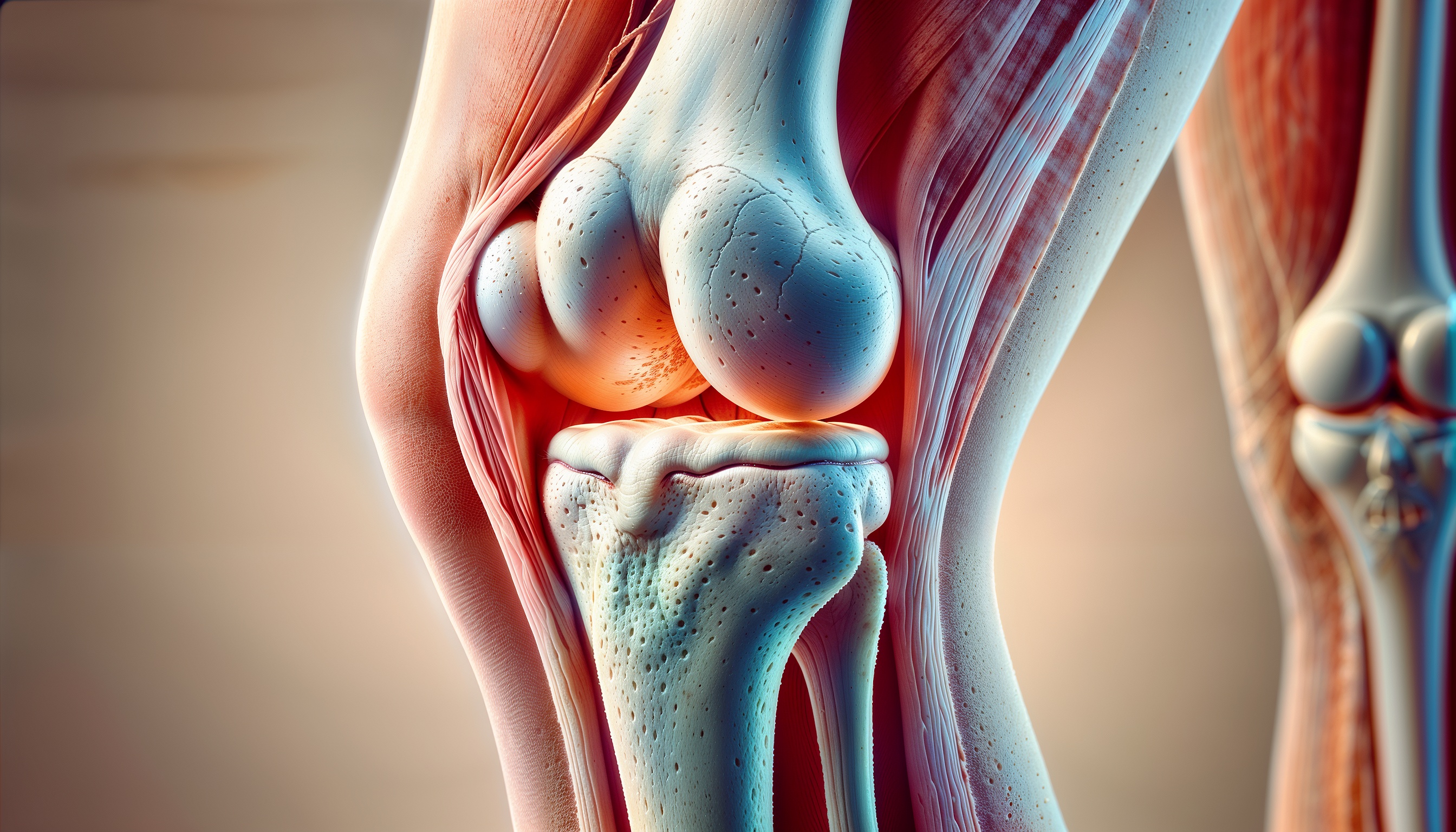
The real culprits: what causes that nagging pain?
The pain you feel isn’t usually from your knee itself. It’s from what’s happening above and below it.
Muscle Imbalances are the biggest troublemakers. Weak glutes can’t stabilize your hip properly, forcing your knee to work overtime. Tight hamstrings pull on your pelvis, changing how your leg moves. Imbalanced quad muscles create uneven pressure on your kneecap.
Poor Biomechanics compound the problem. If your foot overpronates (rolls inward too much), it creates a chain reaction up your leg. Your shin bone rotates inward, your thigh bone follows, and your kneecap gets pulled out of alignment.
Overtraining and Sudden Changes are the final straw. Your body can adapt to gradual increases in training. But jump from running 10 miles a week to 30, and something’s going to give – often your knee.
The golden rules of rehabbing your knee
The RICE principle
If you’re dealing with acute pain and swelling, start with the basics. Rest doesn’t mean complete inactivity – it means avoiding activities that cause pain. Ice for 15-20 minutes every 2-3 hours can reduce inflammation. Compression with an elastic bandage provides support. Elevation helps reduce swelling.
But here’s what many people miss: RICE is just the first step, not the solution.
Listen to your body
Your body talks to you through pain. Sharp, shooting pain is a red light – stop immediately. Dull muscle fatigue during exercise is normal. Joint pain during or after exercise is not.
Each exercise should feel challenging but never painful. If an exercise hurts your knee, skip it for now and focus on the others.
When to see a doctor or physical therapist
Some symptoms require professional attention immediately:
- Severe swelling that doesn’t improve with rest and ice
- Inability to bear weight on your leg
- Your knee locks or gives way
- Pain that worsens despite following proper treatment
Don’t wait weeks hoping these symptoms will resolve on their own.
Phase 1: pain & inflammation reduction – the first 72 hours (3 exercises)
Start here if you’re dealing with acute pain or if you haven’t exercised in a while. These gentle exercises reduce inflammation and begin the healing process.
1. Quad sets
Why it helps: This exercise gently activates your quadriceps without putting stress on your knee joint. It’s like turning on a dimmer switch for your quad muscles.
How to do it:
- Lie on your back with your legs straight
- Tighten your thigh muscle by pushing your knee down toward the floor
- Hold for 5 seconds, then relax
- Repeat 10-15 times, 2-3 times per day
You should feel your thigh muscle contract, but no knee pain.
2. Heel slides
Why it helps: This exercise improves pain-free range of motion in your knee. It’s like gentle oil for a rusty hinge.
How to do it:
- Lie on your back with both legs straight
- Slowly slide your heel toward your buttocks, bending your knee
- Go only as far as comfortable – don’t push through pain
- Slowly slide your heel back to the starting position
- Repeat 10-15 times, 2-3 times per day
The goal is smooth, pain-free movement, not maximum range of motion.
3. Glute squeezes
Why it helps: Your glutes are like the foundation of a house. If they’re weak, everything above them (including your knee) suffers. This exercise starts waking them up.
How to do it:
- Lie on your back with knees bent, feet flat on the floor
- Squeeze your buttocks muscles as tightly as possible
- Hold for 5 seconds, then relax
- Repeat 10-15 times, 2-3 times per day
Focus on really squeezing those glutes – they’ve probably been asleep for a while!
Phase 2: building foundational strength (6 exercises)
Once you can perform Phase 1 exercises pain-free for 2-3 days, progress to Phase 2. These exercises build the strength foundation your knee needs.
4. Clamshells
Why it helps: This exercise specifically targets your gluteus medius – the muscle that prevents your knee from collapsing inward when you run. It’s like installing a strong side fence for your hip.
How to do it:
- Lie on your side with knees bent at 90 degrees
- Keep your feet together and lift your top knee up
- Hold for 2 seconds, then lower slowly
- Perform 10-15 reps on each side, 2-3 times per day
Keep your hips stacked – don’t let them roll backward.
5. Straight leg raises
Why it helps: This exercise strengthens your quadriceps in a controlled, non-weight-bearing way. It’s like doing bicep curls for your thigh muscles.
How to do it:
- Lie on your back with one leg bent, one straight
- Lift your straight leg until it’s level with your bent knee
- Hold for 2 seconds, then lower slowly
- Perform 10-15 reps on each leg, 2-3 times per day
Keep your knee straight and your foot flexed throughout the movement.
6. Glute bridges
Why it helps: This exercise strengthens your entire posterior chain – glutes, hamstrings, and core. Think of it as building a strong back support system for your knee.
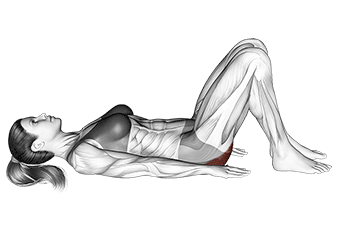
How to do it:
- Lie on your back with knees bent, feet flat on the floor
- Squeeze your glutes and lift your hips up
- Create a straight line from your knees to your shoulders
- Hold for 2 seconds, then lower slowly
- Perform 10-15 reps, 2-3 times per day
Focus on squeezing your glutes, not just lifting your hips.
7. Standing hamstring curls
Why it helps: Your hamstrings work with your quads to control knee movement. Strong hamstrings are like having good brakes on your car.
How to do it:
- Stand behind a chair for support
- Bend your knee, bringing your heel toward your buttocks
- Hold for 2 seconds, then lower slowly
- Perform 10-15 reps on each leg, 2-3 times per day
Keep your thighs parallel – don’t let your knee drift forward.
8. Wall sits
Why it helps: This exercise builds isometric strength in your quads, glutes, and hamstrings without dynamic movement. It’s like holding a plank for your lower body.
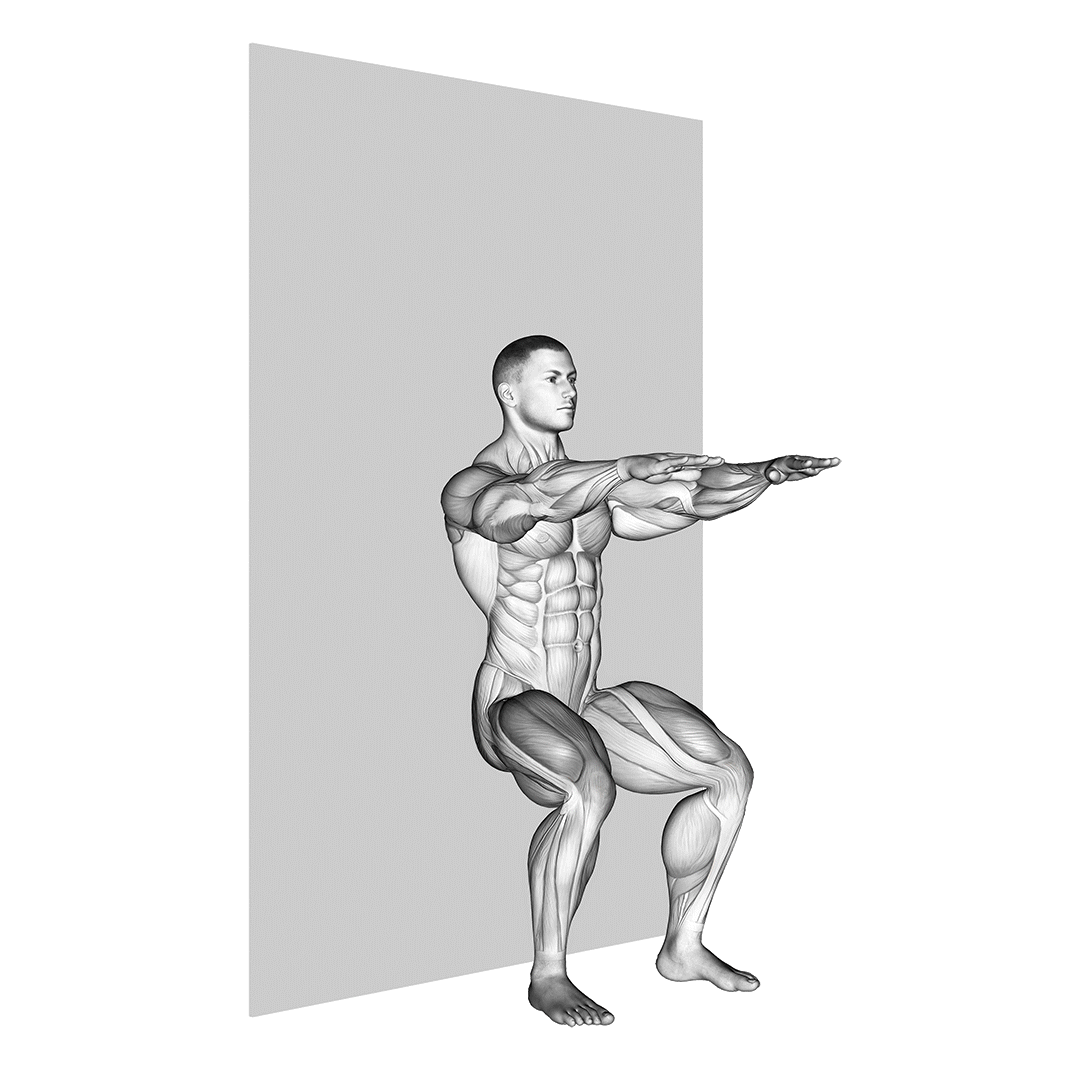
How to do it:
- Stand with your back against a wall
- Slide down until your thighs are parallel to the floor
- Hold for 15-30 seconds
- Perform 3-5 reps, 2-3 times per day
Keep your knees over your ankles, not pushed forward.
9. Calf raises
Why it helps: Strong calves help absorb impact when you run. They’re like having better shock absorbers in your car.
How to do it:
- Stand with your feet hip-width apart
- Rise up onto your toes as high as possible
- Hold for 2 seconds, then lower slowly
- Perform 15-20 reps, 2-3 times per day
Control the movement – don’t bounce up and down.
Phase 3: Dynamic and functional strengthening (6 exercises)
After 1-2 weeks of Phase 2 exercises, you’re ready for more challenging movements. These exercises prepare your body for the demands of running.
10. Bodyweight squats
Why it helps: Squats are the king of lower body exercises. They strengthen your entire leg in a functional movement pattern that mimics running.
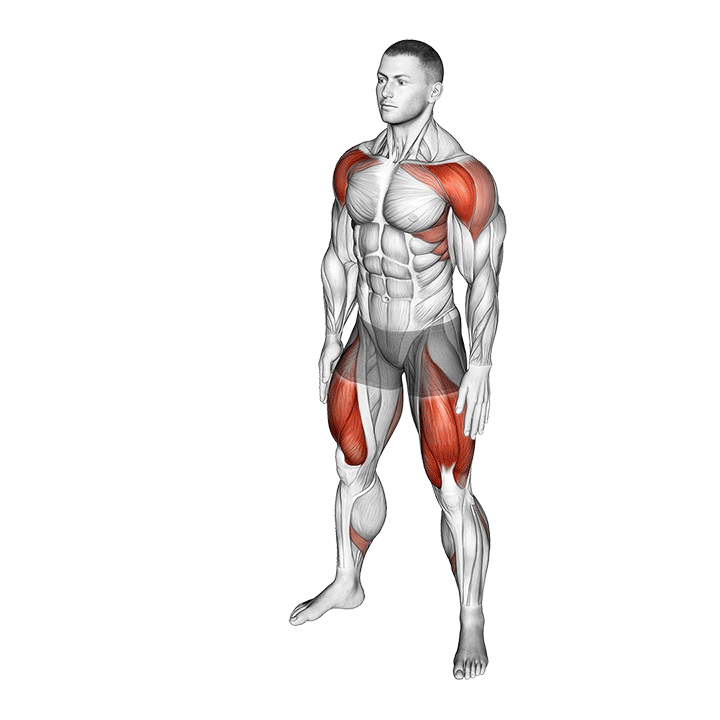
How to do it:
- Stand with feet shoulder-width apart
- Lower down as if sitting in a chair
- Keep your chest up and knees over your ankles
- Push through your heels to return to standing
- Perform 10-15 reps, 2-3 times per day
Quality over quantity – perfect form is more important than depth.
11. Reverse lunges
Why it helps: Unlike forward lunges, reverse lunges put less stress on your knee joint while still building strength. It’s like doing squats one leg at a time.
How to do it:
- Step backward with one leg
- Lower until both knees are at 90 degrees
- Push through your front heel to return to standing
- Perform 8-12 reps on each leg, 2-3 times per day
Keep most of your weight on your front leg.
12. Step-ups
Why it helps: This exercise mimics the single-leg action of running and builds powerful quad and glute strength. It’s like training for stairs that fight back.
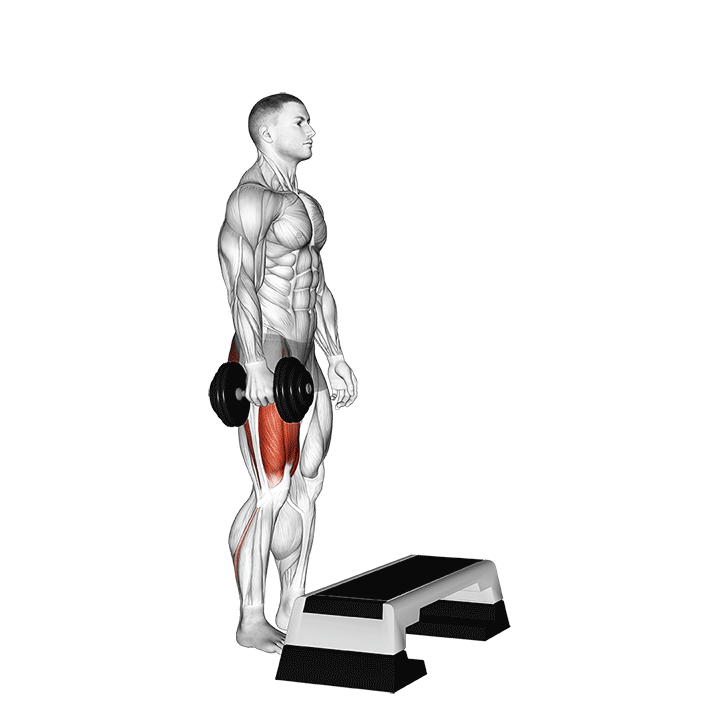
How to do it:
- Step up onto a sturdy box or step
- Step up completely, standing tall
- Step down with control
- Perform 8-12 reps on each leg, 2-3 times per day
Control the descent – don’t just drop down.
13. Single-leg Romanian deadlifts (with support)
Why it helps: This exercise improves hamstring strength and single-leg stability. It’s like teaching your body to balance on one leg while doing work.
How to do it:
- Stand on one leg, hold onto a chair for support
- Hinge at your hip, reaching toward the floor
- Keep your back straight and standing leg slightly bent
- Return to standing by squeezing your glutes
- Perform 8-12 reps on each leg, 2-3 times per day
Focus on the hip hinge movement, not just reaching down.
14. Standing hip abduction (with band)
Why it helps: This exercise further strengthens your hip abductors for improved pelvic stability during running. It’s like adding extra guy-wires to a tent.
How to do it:
- Stand with a resistance band around your ankles
- Lift one leg out to the side against the band
- Hold for 2 seconds, then lower slowly
- Perform 10-15 reps on each leg, 2-3 times per day
Keep your pelvis level – don’t let it tilt.
15. Plank with leg raises
Why it helps: This exercise integrates core stability with glute activation. It’s like teaching your entire body to work as one unit.
How to do it:
- Get into a plank position on your forearms
- Lift one leg about 6 inches off the ground
- Hold for 2 seconds, then lower
- Alternate legs for 8-12 reps each, 2-3 times per day
Keep your hips level and your core tight throughout.
Your weekly workout plan for a stronger knee
Here’s how to structure your weekly routine:
Week 1-2: Phase 1 + Phase 2
- Phase 1 exercises: Daily
- Phase 2 exercises: Every other day
- Rest days: Light walking or complete rest
Week 3-4: Phase 2 + Phase 3
- Phase 2 exercises: 3-4 times per week
- Phase 3 exercises: 2-3 times per week
- Rest days: Light activity
Week 5+: Phase 3 + Maintenance
- Phase 3 exercises: 3-4 times per week
- Continue 2-3 Phase 2 exercises as maintenance
- Gradually return to running
Progression guidelines:
- Start with lower rep ranges and work up
- Add 1-2 reps per week when exercises become easy
- Only progress when you can complete all reps with good form
- Listen to your body – some days you’ll need to back off
Essential stretches for runner’s knee
Strength without flexibility is like having a powerful car with rusty steering. These stretches address the tight muscles that contribute to runner’s knee.
Standing quadriceps stretch
Your quads work overtime when you have runner’s knee. This stretch helps them relax.
- Stand near a wall for support
- Bend your knee and grab your ankle behind you
- Pull your heel gently toward your buttocks
- Hold for 30 seconds, repeat 2-3 times each leg
Hamstring stretch
Tight hamstrings change how your pelvis moves, affecting your entire leg alignment.
- Sit on the floor with one leg straight
- Reach toward your toes, keeping your back straight
- Hold for 30 seconds, repeat 2-3 times each leg
You should feel the stretch in the back of your thigh, not your back.
Figure-four stretch (for glutes and piriformis)
This stretch targets deep hip muscles that often become tight with running.
- Lie on your back with both knees bent
- Place your right ankle on your left knee
- Grab behind your left thigh and pull toward your chest
- Hold for 30 seconds, repeat 2-3 times each leg
Calf stretch
Tight calves can contribute to poor running mechanics up the chain.
- Stand facing a wall, arms extended
- Step your right foot back 3 feet
- Keep your right heel down and lean forward
- Hold for 30 seconds, repeat 2-3 times each leg
Perform these stretches after your strength exercises or after a warm shower when your muscles are warm.
How to prevent runner’s knee recurrence
Fixing runner’s knee is just the first step. Keeping it from coming back requires smart training habits.
The 10% rule: smart training progress
Your body adapts to gradual increases in stress. The 10% rule means increasing your weekly mileage by no more than 10% each week. Jump from 20 miles to 30 miles in one week, and you’re asking for trouble.
This applies to pace, hills, and new surfaces too. Add one new challenge at a time.
The importance of proper footwear
Your shoes are your first line of defense against impact. Replace running shoes every 300-500 miles, or when the tread is worn down. If you overpronate, consider motion control shoes. If you have high arches, look for neutral shoes with good cushioning.
Get fitted at a specialty running store where they can analyze your gait and recommend appropriate shoes.
Foam rolling for your quads, hamstrings, and IT band
Foam rolling is like giving yourself a deep tissue massage. Focus on these areas 2-3 times per week:
- Quads: Roll from your hip to just above your knee
- Hamstrings: Roll from your glutes to just above your knee
- IT Band: Roll from your hip to just below your knee (this one might be uncomfortable!)
Spend 1-2 minutes on each area, rolling slowly and pausing on tender spots.
A gradual return-to-running plan
Don’t jump back into your old running routine the moment your knee feels better. Here’s a sample progression:
- Week 1: Walk 20 minutes, run 1 minute, repeat 5 times
- Week 2: Walk 15 minutes, run 2 minutes, repeat 4 times
- Week 3: Walk 10 minutes, run 3 minutes, repeat 3 times
- Week 4: Walk 5 minutes, run 5 minutes, repeat 3 times
- Week 5: Walk 5 minutes, run 10 minutes, repeat 2 times
- Week 6: Walk 5 minutes, run 15 minutes, walk 5 minutes
Adjust this timeline based on how you feel. If your knee starts hurting, back off and spend more time at the current level.
Conclusion
Runner’s knee doesn’t have to end your running career. With the right exercises, performed consistently, you can not only fix your current pain but build a stronger, more resilient body for the future.
Remember these key points:
- Start with gentle exercises and progress gradually
- Consistency beats intensity – doing a little bit daily is better than doing a lot once a week
- Listen to your body – pain is a signal to slow down, not push through
- Prevention is easier than treatment – keep doing your exercises even after the pain is gone
Your knee pain started because of muscle imbalances and movement patterns that developed over time. Fixing them takes time too, but with patience and consistency, you’ll be back to pain-free running stronger than before.


